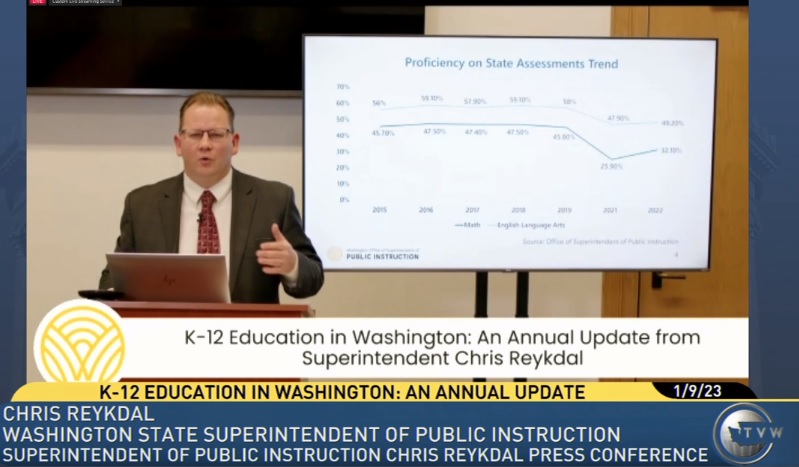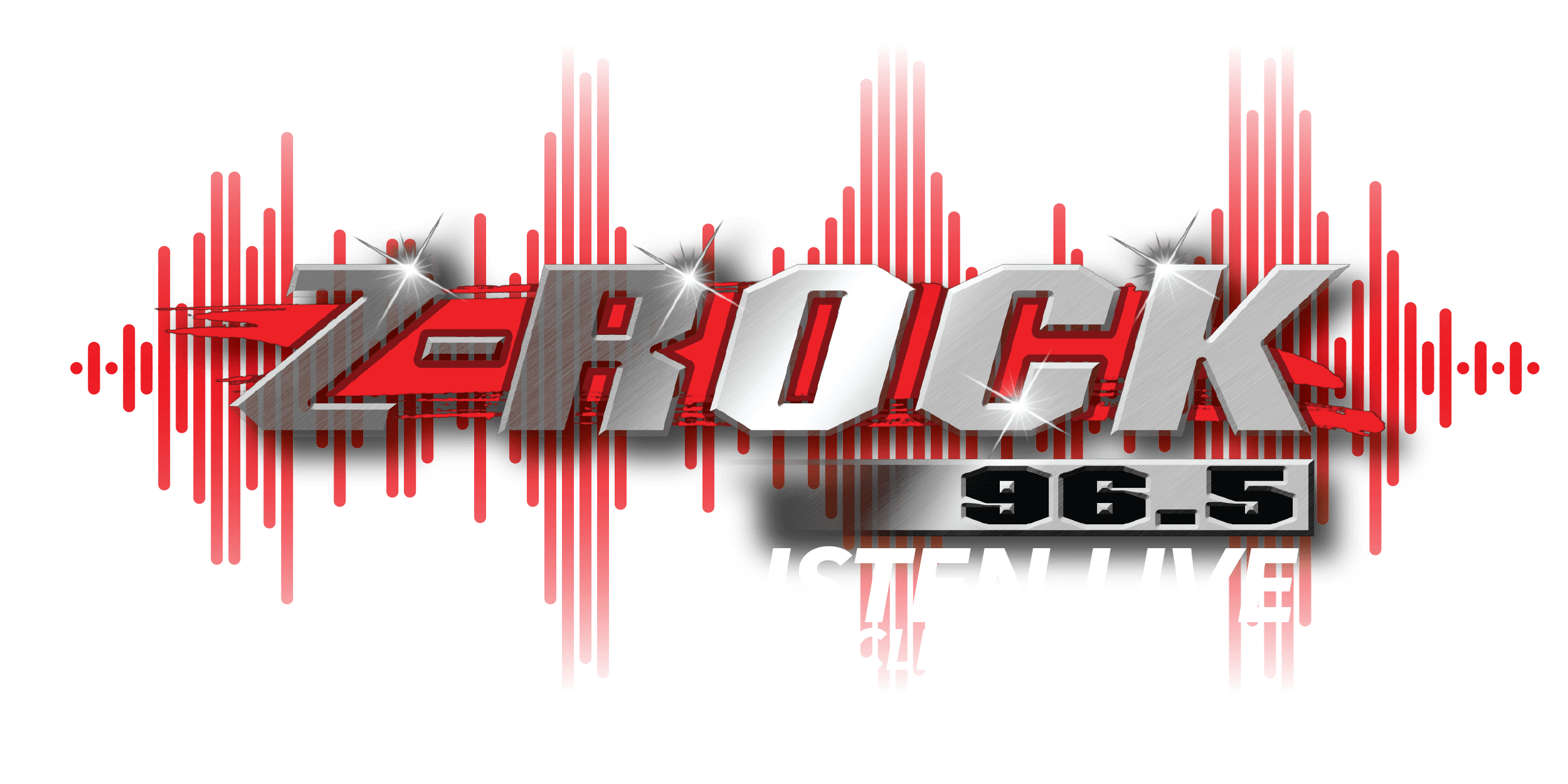
OLYMPIA, WA – As the 2023 Washington State Legislative Session begins today, State Superintendent Chris Reykdal described the state of Washington’s K–12 education system in an annual public address from the Office of Superintendent of Public Instruction headquarters in Olympia.
In the address, Reykdal provided updates on several topics that are top-of-mind for policymakers, educators, and families alike.
Reykdahl says while students were affected by the COVID-19 pandemic, the phrase “learning loss” is a “tremendous misnomer.” He says no one went backward, but the trajectory of our typical expectations of growth certainly took an impact during the pandemic.
He adds that the term “learning loss” makes a presumption that students who knew that “two-plus-two equals four” no longer know that. He used an analogy to explain.
“I am so proud of the progress we have made over the last year,” Reykdal says. “Our schools are leveraging one-time federal funds to support student learning and well-being recovery in innovative ways, and their tireless efforts have had a tangible impact. However, our students’ needs are profound, and they preceded the pandemic.”
“Despite having one of the fastest growing economies in America,” Reykdal continued, “the state’s investment in our public schools is on a troubling downward trend once again while the national average is increasing. I have put forward a package for legislative consideration that would support continued recovery and acceleration for our students and ensure our state is investing at least at the national average.”
Brief descriptions of some of the topics covered by the Superintendent are provided below.
Student Learning and Well-Being Recovery
Like their peers across the nation, Washington’s students were impacted by the pandemic in countless ways. However, with diligent efforts by students, educators, community partners, students are recovering.
Using their one-time emergency relief funds, school districts across the state are engaging in innovative, evidence-based practices to support student learning and well-being recovery and acceleration. This includes things like dedicated staffing to support students to graduation, free mental health services, access to higher education in high school at no cost to the student, and much more. Districts are on track to spend down all the funds by the September 2024 deadline.
Student Enrollment Data
Early in the pandemic, our earliest grades saw sharp declines in enrollment. At the same time, enrollment for our high school students has remained very steady through the pandemic, even increasing from pre-pandemic numbers for some grades. While the situation for every student and family is unique, transfers to private schools and homeschool peaked during the height of the pandemic in 2020 and have since returned to their pre-pandemic rates.

2022 Graduation Data
The graduation rate for the Class of 2022 remained steady at 82.3%, a small decline of 0.2 percentage points as compared to the Class of 2021. As an increasing number of students have persisted past their fourth year to earn their diploma, 2022 continued to see near record-high graduation rates for students in their fifth, sixth, and seventh years.

In addition, nearly every student group saw an increase in their 4-year graduation rate, and many persistent opportunity gaps are closing.

School Funding
From 2020 through 2024, the federal government will have invested $2.9 billion in our schools with emergency relief dollars. School districts have spent these flexible dollars to support health and safety, access to educational technology, mental health, academic interventions and support, and more. The majority of the over 9,000 individuals employed with these dollars are paid to provide direct academic support to our students.
School districts are on pace to spend all of these dollars before the final deadline. These one-time federal funds make up an average of less than 5% of our school districts’ total budgets statewide.
As these one-time temporary funds are spent down in support of students, we must shift our focus to fixing the core challenges that remain in our state’s school funding system.
Further Transformation
To support continued progress in student learning and well-being recovery, Superintendent Reykdal has put forward a package of proposals for legislative consideration this session. This includes priorities like fully funding supports for students with disabilities, providing all students with meals at school at no cost to the student, eliminating financial barriers to dual credit programs, ensuring all of Washington’s youngest learners have free access to books at home through their fifth birthday, and much more.
For More Information
- View a recording of the address
- See state- and district-level graduation and enrollment data on the OSPI Report Card
- OSPI Legislative Priorities


